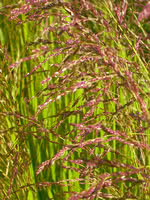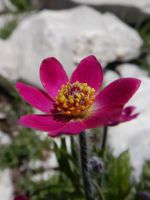Mon-Fri 9am - 5pm Mountain time
Tall Manna Grass vs Cutleaf Anemone
Glyceria grandis
Anemone multifida
CUSTOM GROW
NOT AVAILABLE THIS SEASON - MIGHT RETURN
Manna Grass and other waterside plants are an excellent way to prevent erosion and provide habitat and forage for animals. The difference is that Manna Grass looks better doing it! With distinctive purple grains at the top of its stalks, Manna Grass adds a splash of color to the waterside that most other aquatics can't offer.
Manna Grass is good for returning disturbed sites to nature and provides nourishment to many animals, except for cattle who find it toxic.
Pacific Anemone is a native perennial wildflower with buttercup-like blooms. The flowers can be a variety of colors, including white, pink, and dark red. The deeply cut leaves add a unique texture to the landscape. The flowers bloom from May to August, providing early-season nectar and pollen for insects. They attract a variety of pollinators, including bees and butterflies.
As the flowers fade, they become fluffy white seed heads, which birds often use in their nests. They can spread readily through self-seeding; to limit their spread, regular deadheading is recommended. Tolerant of drought and poor soils, the Pacific Anemone is well suited for wildflower gardens, pollinator gardens, and naturalization projects.
Tall Manna Grass Quick Facts
Cutleaf Anemone Quick Facts
Toxicity: toxic to cattle

